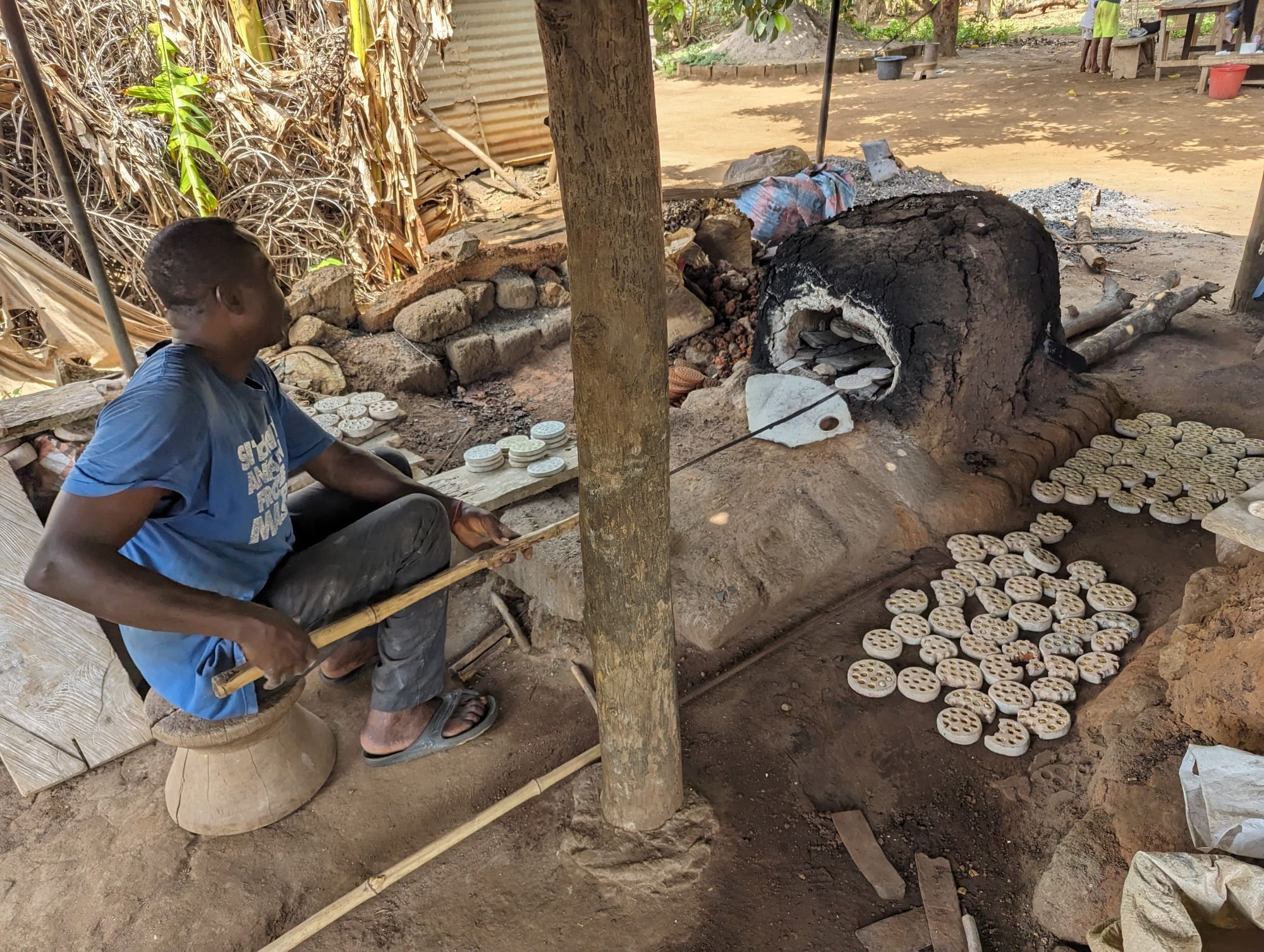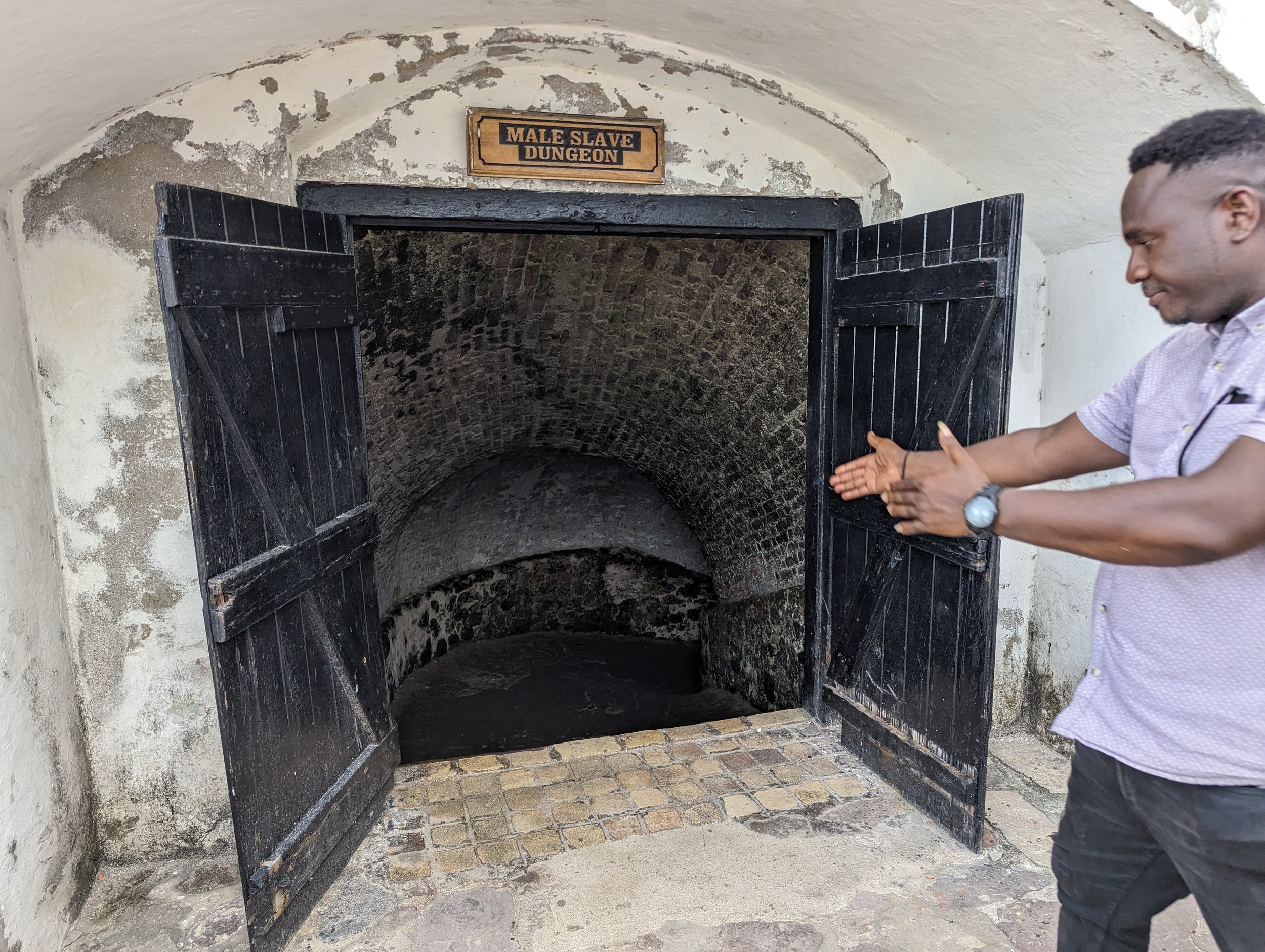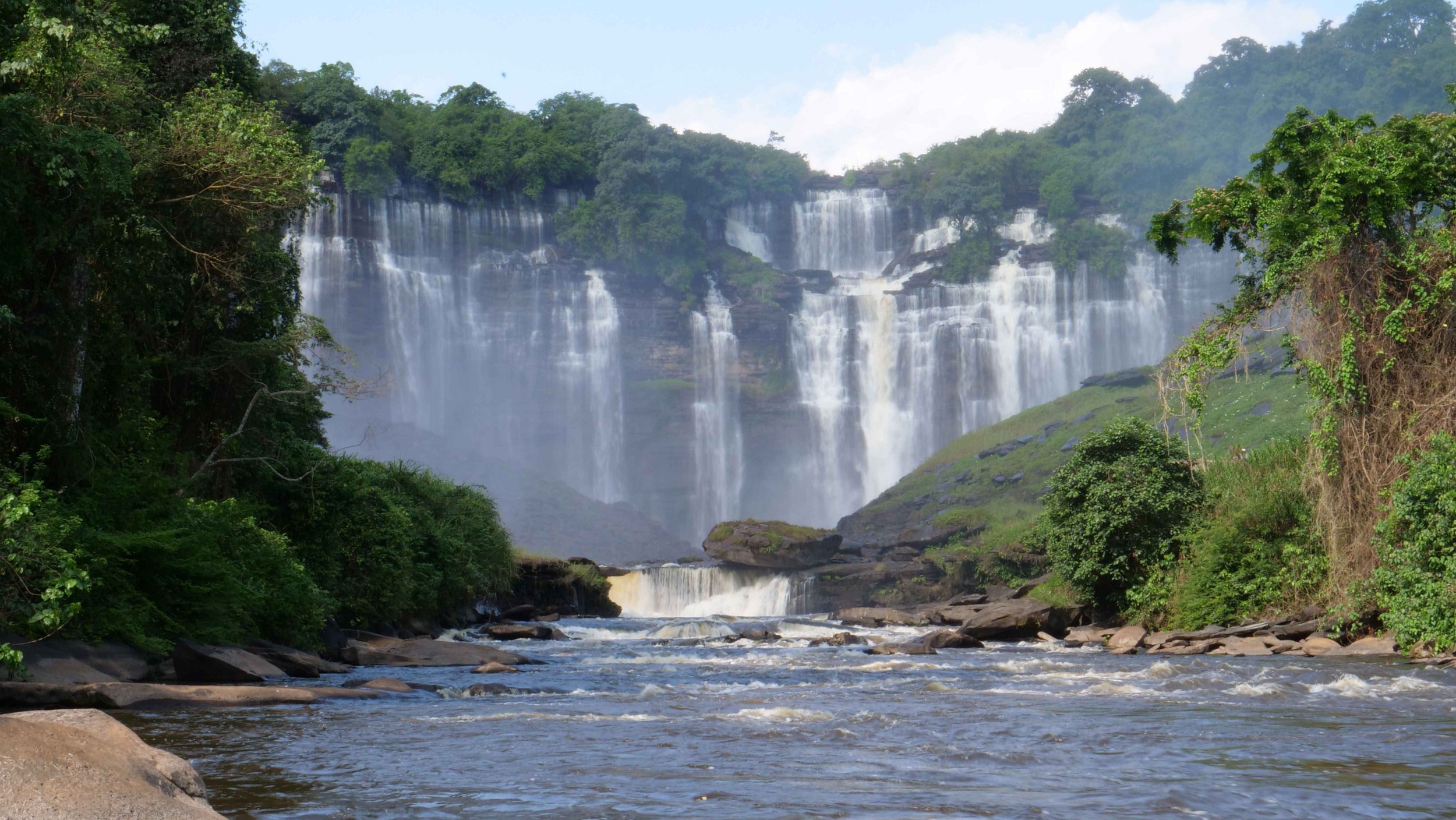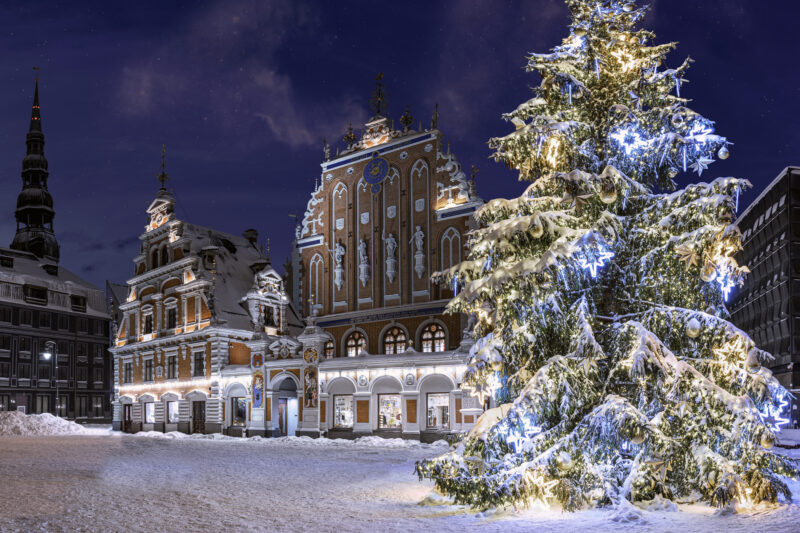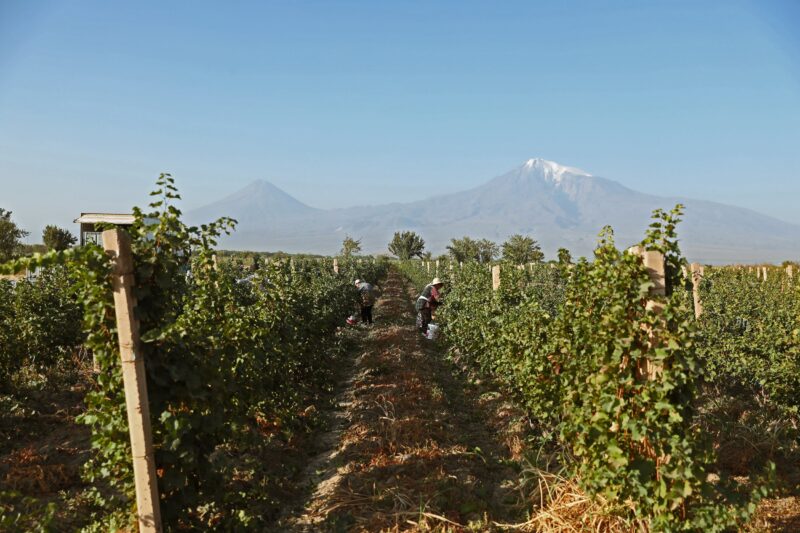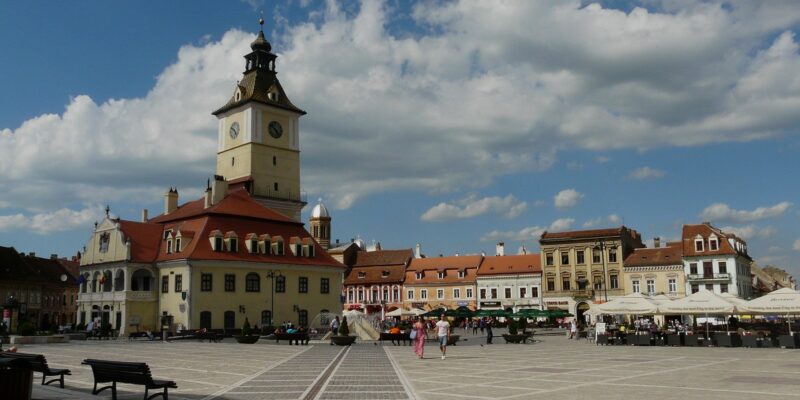| Tour Code | Start | End | Trip Status | Pricing Per person |
|---|---|---|---|---|
| GAE/220526 |
May 22, 2026
Friday |
Jun 06, 2026
Saturday |
Guaranteed |
£3,295.00
Single Room Supplement: £325.00 |
| GAE/190626 |
Jun 19, 2026
Friday |
Jul 04, 2026
Saturday |
Guaranteed |
£3,295.00
Single Room Supplement: £325.00 |
| GAE/110926 |
Sep 11, 2026
Friday |
Sep 26, 2026
Saturday |
Guaranteed |
£3,295.00
Single Room Supplement: £325.00 |
| GAE/021026 |
Oct 02, 2026
Friday |
Oct 17, 2026
Saturday |
Guaranteed |
£3,295.00
Single Room Supplement: £325.00 |
| GAE/210527 |
May 21, 2027
Friday |
Jun 05, 2027
Saturday |
Guaranteed |
£3,295.00
Single Room Supplement: £325.00 |
| GAE/180627 |
Jun 18, 2027
Friday |
Jul 03, 2027
Saturday |
Guaranteed |
£3,295.00
Single Room Supplement: £325.00 |
| GAE/100927 |
Sep 10, 2027
Friday |
Sep 25, 2027
Saturday |
Guaranteed |
£3,295.00
Single Room Supplement: £325.00 |
| GAE/011027 |
Oct 01, 2027
Friday |
Oct 16, 2027
Saturday |
Guaranteed |
£3,295.00
Single Room Supplement: £325.00 |
Georgia and Armenia Encompassed
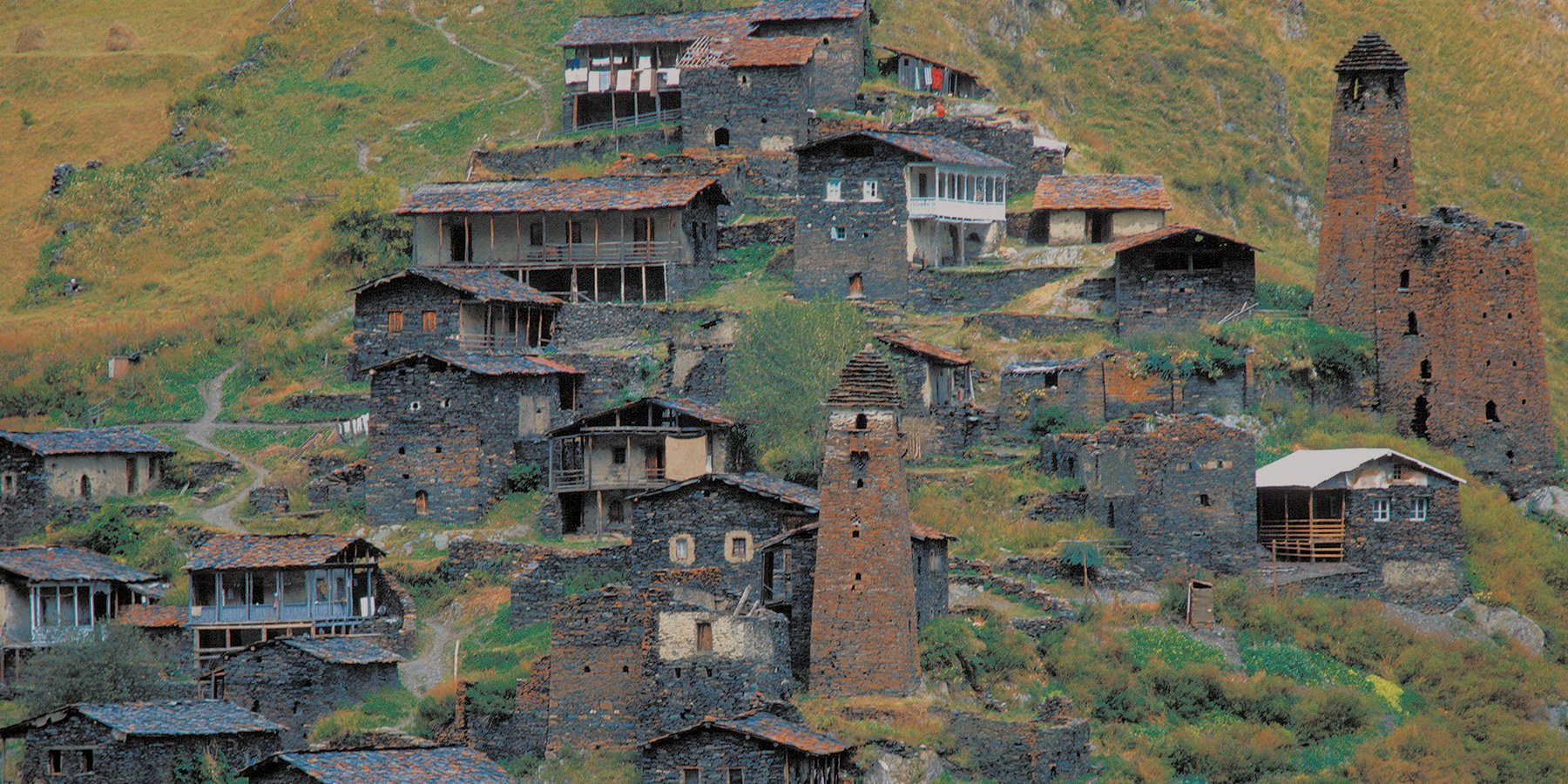
Georgia and Armenia are two of the least known nations of Europe – in fact most people aren’t even sure whether they’re actually in Europe. Hidden away and often eclipsed by their monumental neighbours, these two countries hide a wealth of diverse secrets. This trip encompasses the very best of the region. We spend time in Tbilisi and marvel at the various cultures that have left their mark on this city, from Imperial Russia to Ottoman Turkey and beyond. We travel into the High Caucasus at Kazbegi and walk up to a dramatically situated ancient church. Explore the remote and mystical land of Svaneti, home to an intriguing culture and some of Europe’s most remote villages overlooked by imposing stone built watchtowers and see the cave town of Vardzia. To top it off in Georgia experience local hospitality and taste wine in the charming region of Kakheti. Armenia is the world’s oldest Christian nation with an astounding collection of ancient churches and monasteries which will captivate you. In contrast is the capital Yerevan, a lively and engaging city which embraces modernity yet manages to retain its traditions, and is packed full of some of the best Soviet style architecture to be found anywhere. This is a busy tour with lots of fabulous history, culture and scenery to enjoy. Isn’t it time you learned more about this intriguing region?
Arrival and departure transfers
Overland transport throughout with professional driver
All accommodation
Services of English-speaking guide / tour leader
Meals as listed, B – Breakfast, L – Lunch, D – Dinner
Entrance fees for sites listed as part of the itinerary
International flights (, contact , us, for expert advice and a quote)
Any airport taxes
Travel Insurance
Visa – when required
Drinks
Items of personal nature
Tips (Discretionary)
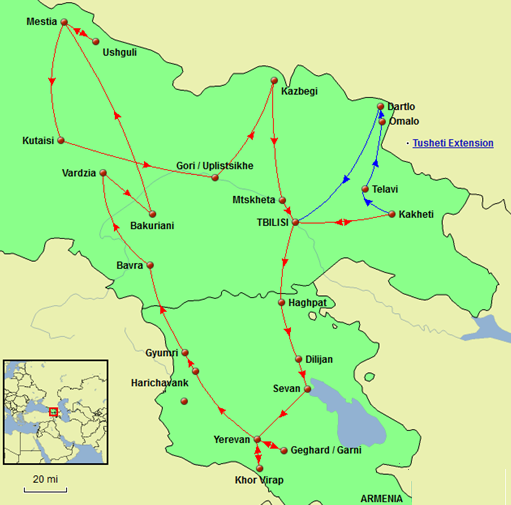
This 16-day tour explores the rich cultures and stunning landscapes of Georgia and Armenia. Starting in Tbilisi, you’ll visit historic landmarks, cross into Armenia to see UNESCO monasteries, and explore Yerevan’s cultural treasures. The tour continues through the picturesque Svaneti region, visits the spiritual center of Mtskheta, and ends in Tbilisi, offering a journey filled with history, natural beauty, and authentic experiences. for a few seconds. This tour begins in Tbilisi, where you explore its charming old town before crossing into Armenia to visit UNESCO sites like Haghpat and Sanahin, and discovering Yerevan’s cultural landmarks. In Georgia, the journey continues through Svaneti’s dramatic landscapes and ancient centers including Mtskheta, culminating in a guided tour of Tbilisi that showcases both historical depth and modern vibrancy.
Exploring Old Tbilisi
Arrive in Tbilisi and explore its charming Old Town and historic streets.
Tbilisi to the Armenia Border, Haghpat & Sanahin
Cross into Armenia to visit the UNESCO Haghpat and Sanahin monasteries on a scenic border journey.
Yerevan Sightseeing Tour
Yerevan’s cultural landmarks, including Republic Square, the Genocide Memorial, and the Cascade.
Mestia and Ushguli in Svaneti Tour
Yerevan’s cultural landmarks, including Republic Square, the Genocide Memorial, and the Cascade.
Gudauri, Kazbegi & Mtskheta
Travel from Gudauri through Kazbegi to the ancient spiritual center of Mtskheta.
Download the Information Pack
To download the tour full dossier, which includes a complete day-by-day itinerary breakdown and detailed tour information, fill in the details below.

Foreign Office Travel Warnings Before booking your tour, please familiarise yourself with the country specific information provided by the UK’s Foreign, Commonwealth and Development Office (FCDO) – www.gov.uk/foreign-travel-advice. This includes important information such as latest immigration requirements, and details of any travel advisories. We constantly monitor the advice posted by the FCDO. In particular we will always advise clients of any travel warnings. At present there are no warnings against travel to the parts of Georgia or Armenia that we visit on this tour. Please feel free to contact us should you have any specific concerns or would like to know in detail what measures are being taken to ensure visits remain trouble free and without incident. It should be noted that this information applies to British citizens. Other nationals are asked to check the current position of their respective government. Visa Information At the time of writing British, US and Australian nationals do not require a visa for a tourist visit to Georgia or Armenia. For further details please visit the applicable website shown below. British Nationals – www.gov.uk/foreign-travel-advice US Nationals – travel.state.gov/content/travel/en/international-travel.html Australian Nationals – www.smartraveller.gov.au Other nationals should check the latest requirements with the authorities in their home country, or with the destination’s nearest embassy or consulate. Should you require any documentation to support a visa application, such as a letter of invitation, upon request this will be provided by Undiscovered Destinations after receipt of your balance payment. As it is the travellers’ responsibility to ensure that they meet all entry requirements it is essential that you check the rules and any other conditions at the time of booking and again when making your balance payment. In addition, we would strongly advise that you make a final check around two weeks before your arrival. This is important as requirements can change at short notice. Undiscovered Destinations, when possible, will provide guidance about entry rules, but in the first instance please contact the relevant authorities, including the applicable embassy or consulate for assistance. Passports It is your responsibility to ensure that you are in possession of a full passport, valid for at least six months after the date of return to your country. We strongly advise that your passport contains a minimum of two blank pages, as this may be a requirement of the local immigration authorities. In addition, certain countries will stipulate that the two blank pages are opposite each other. If you are unable to meet these requirements, you may be refused boarding by your airline or denied entry by the immigration authorities. For specific information about the requirements for your destination please check with the country’s embassy or consulate. Alternatively, UK citizens can visit www.gov.uk/foreign-travel-advice. Vaccinations & Protection As with travel to most parts of Eastern Europe, we strongly recommend that you contact your doctor’s surgery or a specialist travel clinic for up-to-date information, advice, and the necessary vaccinations. For a visit of less than one month, almost certainly you will be advised to have immunisations against the following: Diphtheria and Tetanus, Hepatitis A, Typhoid, Meningitis. The use of a DEET-containing insect repellent maybe recommended. The legal status and regulation of some medicines prescribed or purchased in your home country can be different in other countries. If you’re travelling with prescription or over-the-counter medicine, read this guidance from NaTHNaC on best practice when travelling with medicines. For further information on the legal status of a specific medicine, you’ll need to contact the embassy, high commission or consulate of the country or territory you’re travelling to. Travel Insurance It is a condition of booking with Undiscovered Destinations that you have adequate valid travel insurance. It is your responsibility to arrange appropriate travel insurance and ensure you have read and understood the full terms and conditions of your travel insurance policy to ensure that you are covered for all activities you intend to undertake whilst on the tour, including all optional activities. Your Insurance Policy must fully cover you for medical expenses (including cover for Covid-19 conditions) and emergency repatriation to your home country and be valid for the entire duration of your holiday. Local Conditions When travelling to our destinations, many of which are underdeveloped and untouristed by mainstream tourism, a good deal of patience and a sense of humour is an important attribute. This will help you to cope with problems such as ageing or poor infrastructure and when maintenance may not be as high as we would always like. The choice of appropriate accommodation in some towns and cities (particularly the smaller places) can be limited, and standards of both service and maintenance can be less than polished. Guides and other service providers in some of our destinations do not always have the decades of collective practice and experience that their counterparts in more developed countries can draw upon. Although we will always try and resolve any issues as quickly as possible, on occasions there may be some shortcomings which no matter how hard we try will be unavoidable.
